2019 Mercedes-Benz G 500
| The Good: – Classic good looks – Premium cabin appointments – Power, handling, offroading |
The Bad: – Hard to tell old from new – Some low-rent quirks remain – Sky-high price |
The Mercedes-Benz Geländewagen was first introduced in Europe in 1979, yet development started way back in 1972. Originally conceived as a purely utilitarian vehicle with as low as 75 hp, it has since evolved into a status symbol the world over. Since 1990 the G-Class has featured permanent all-wheel drive, differential locks on front and rear axles, and a fully-lockable center differential as standard. And in a gradual under-the-skin makeover in the early 2000s, it finally reached the realm of luxury cars with niceties such as a stitched-leather dash and touchscreens, with enough power to take on sports cars, although still painfully utilitarian in terms of drive.
Despite initial plans to replace the G-Wagen in 2006 with the mainstream GL-Class, popular demand meant that the original G continues to be in production alongside the slow-selling GL as a completely separate model line. The new-for-2018 version is the most significant update to the G-Wagen ever, although it is very hard to tell from the outside.
For one, the big boxy SUV has grown in size, adding 52.5mm to the length, 120mm to the width and 7.5mm to the height. Every panel is new, and obvious exterior updates include modern LED headlights and taillights, slimmer indicators and new 20-inch wheels with 275/50 tyres under the wider fender flares. Many edges are smoothened out and the rubber protection stripes along the sides are oddly broken up, but the basic essence of the G-Class’s design is retained. In fact, it is very hard to tell the regular G apart from the AMG now, unless you know what design cues to look for (mostly in the front grille and side-exiting exhaust tips). We had to check the badge in the back just to be sure.
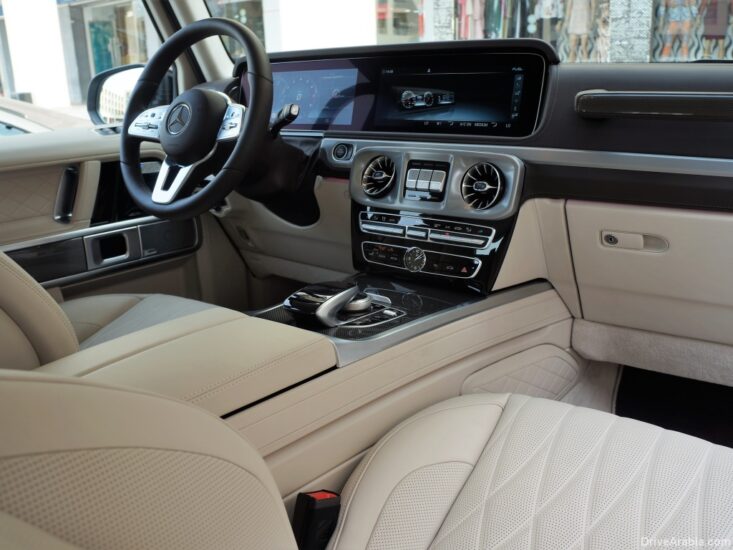
Inside, the G-Wagen finally gets an up-to-date Mercedes dashboard, with funky vent designs and two 12.3-inch iPad-like screens for the gauge cluster and the infotainment system. Beyond the exquisitely-upholstered seats, when you opt for the “Designo” pack, there are premium materials all over, with leather and metal (or metallic-looking plastics) used judiciously to create an upscale ambience, unlike the shoddy feel of the old model.
However, some of the old model’s quirks are carried over, some of them intentionally. There is no smart-key unlocking. When you unlock the doors using the key fob, you hear the loud mechanical noise of the vacuum locks (which we were familiar with in our old 1990 Mercedes-Benz 190E, so it wasn’t a G-Wagen exclusive). Sometimes, one or two locks may not open and you have to lock/unlock to try again. Once you climb inside using the convenient fixed side-steps, you have to get used to the upright windshield very close to your face, which doesn’t take long. You have to slam the door really hard to close it, otherwise it only clicks partially and you have to open and try again. And there is no getting used to the skinny door armrests, although thankfully they are wider than before.
Cabin space has grown thanks to the increase in size. Everyone has more elbow room now, while rear-seat passengers are now offered an extra 150mm of legroom, which makes a massive difference over the cramped older model. Rear legroom is now decent, although very tall people may still feel a bit tight.
The rear seatback can split-fold down as well as recline. There are four covered cup-holders as well as thin door pockets, centre-armrest storage and seatback pouches. The boot has a hydraulically-assisted sideways-opening door, and while the boot space is very tall, overall floor space is less than a compact crossover. The carpeted boot area has small net pockets on the sides as well as a roll-up cover and an optional rubber mat.
Except for the half-baked key fob, tech features are abundant, with keyless push-button start, power seats, good auto a/c with rear vents, the dial-controlled multimedia system, navigation, Bluetooth, parking cameras with sensors, adaptive cruise control, active safety, airbags and all that jazz. The graphics on the screens are crisp and animated, and the speed of functions is reasonably quick. The thumb touchpad on the steering wheel to control those screens is a useful addition.

The 2019 G 500 is powered by the 4.0-litre biturbo V8, good for 416 hp at 5250 rpm and 610 Nm of peak torque from 2250 to 4750 rpm, is paired with a new smooth-shifting 9-speed automatic gearbox. It dispatched the 0-100 kph run in 6 seconds flat on our October run in lukewarm weather. It takes off like a rocket at low revs, but the power tapers off at higher revs. Still, it’s more than enough power for a tall trucklet — feeling too fast even — as you tower high above the road. The AMG version would just be pointless overkill.
It burned 15 litres/100 km (6.7 km/l) of fuel on average during our mixed driving around the city, which is not too bad for a performance truck.
The biggest change for the new G-Wagen is the ride quality. We almost bought an older one, but ditched the idea after experiencing its horrendously-firm ride quality, coupled with immense wind noise and a steering rack so lazy, it felt like churning mud and it also refused to re-centre by itself after a turn. The new one drives like a regular car, with better sound-deadening that makes the cabin decently quiet, new adaptive air suspension that smoothens the ride very well, and moderately-weighted steering that does what you ask it to do while even offering a bit of feedback, unlike modern Mercedes sedans. It finally drives like a premium vehicle.
The handling is reasonably flat at the chassis level on longer turns, but you still feel tipsy because you sit so high above the pivot point. The car is always stable though, and has good grip in regular driving, but understeers rather early if you push it hard into a corner, with obvious body roll to boot.
There are drive modes now, but they just fiddle mildly with the nature of the steering, suspension, gearbox and pedals. The Sport mode is particularly interesting because it holds gears longer and makes the sweet burble of the V8 louder, although it is audible all the time anyway.
The brakes are much better now, with a responsive and well-weighted pedal. The old one felt like you were always one step away from brake failure.
The new G still gets three independently lockable differentials (with prominent buttons on the dash that a typical owner will never use) and a low-range gearbox to go with its all-wheel-drive system, complemented by an updated suspension setup. The front suspension is now independent while the rear remains a solid axle. Approach, departure and breakover angles are improved by one degree. It has all the specs to be a great offroader, but it could’ve been even greater if it had more desert-friendly wheels and height-adjustable suspension, the latter being an odd omission at this price-point.
And indeed, that brings us to the price. With dealer mark-ups, the Benz costs as much as an off-plan villa in Dubai. And let’s not even talk about the AMG version. The value proposition of the G-Wagen remains dubious, but at least it is now much more palatable than before. For the money, you finally get an almost-proper luxury car and not just a tarted-up work truck.
| Price Range: Dh 600,000-700,000 Current Model Introduced in: Body Styles: Engines: Transmissions: Setup: Suspension: |
Brakes: Front: discs Rear: discs Curb Weight: Length: Wheelbase: Top Speed: Test Acceleration 0-100 kph: Observed Test Fuel Economy: |
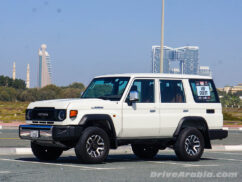
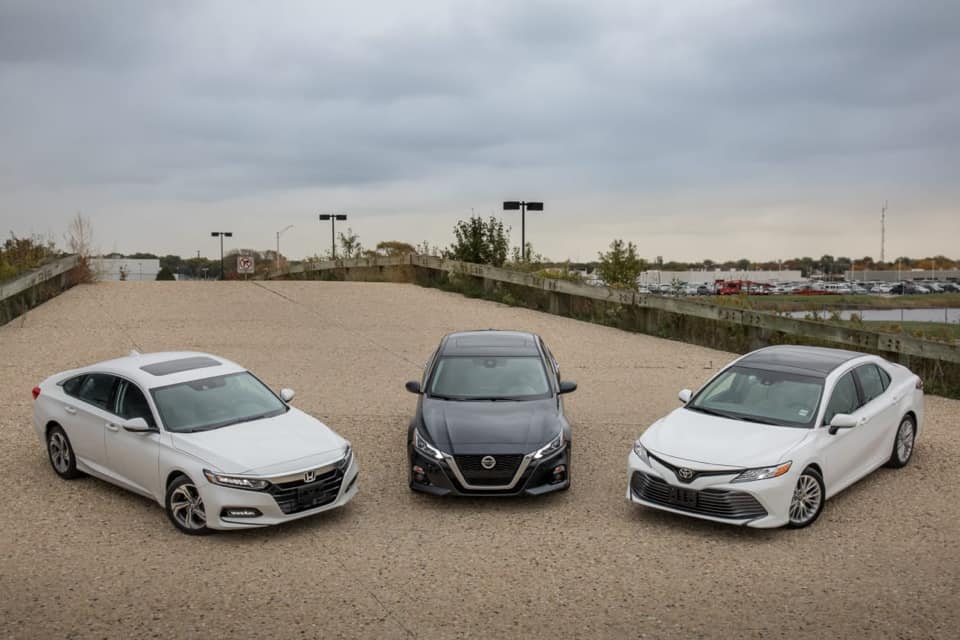
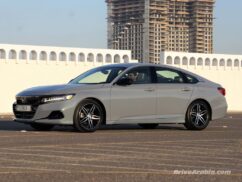



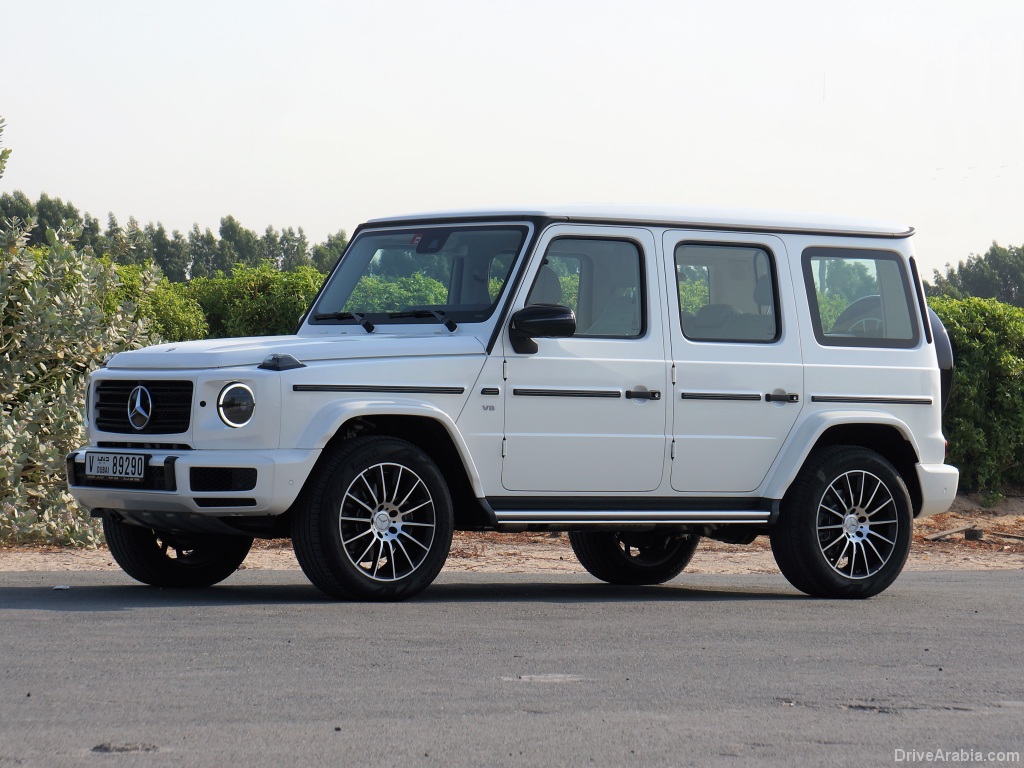



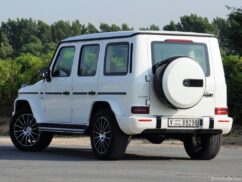





Comments
Farhan
Mash! Let’s talk about the AMG Version!
Mashfique Hussain Chowdhury
Mentioned a little bit in the review. The AMG test car is only given to guaranteed positive reviewers.